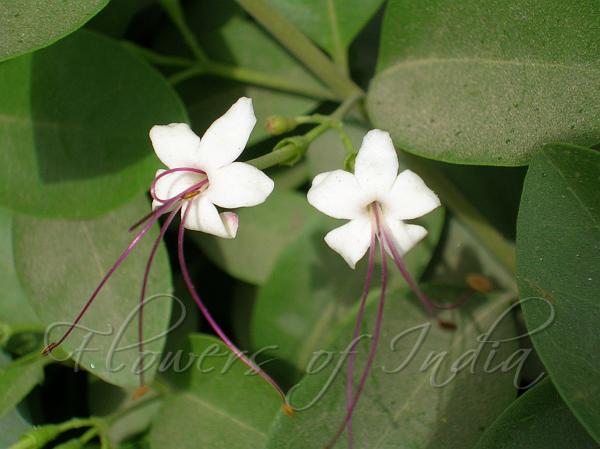|
| Glory Bower |
|

|

| File size | 647253 |
| Original date | 4/22/05 10:07 AM |
| Resolution | 2048 x 1536 |
| Flash | Flash did not fire, auto |
| Focal length | 14.9mm |
| Exposure time | 1/373s |
| Aperture | 4.6 |
| Focus Distance | |
| Metering Mode | Partial |
| Camera make | NIKON |
| Camera model | E3700 |
| Sensor type |
|
|
|
|
Photo: |
Botanical name: Volkameria inermis Family: Verbenaceae (Verbena family)
Synonyms: Clerodendrum inerme, Clerodendrum ovalifolium
Synonyms: Clerodendrum inerme, Clerodendrum ovalifolium
Glory bower is a much branched, straggling shrub, 1-2 m tall. Terminal
branches very often twining slender, twigy, dark green and form dense bush
on the river banks and river slopes. Leaves ovate to elliptical, 5-10 cm
long, acute to acuminate tip, green, smooth, slightly shiny upper surface,
margins entire, leaves opposite, simple. Cymes or umbels usually comprised
of 3 flowers joined at a common base point. White flowers with a 3.5-5.5 cm
long narrow tube ending in 5 petals. Four purple stamens, 1.5-3 cm long,
protrude out of the flower. The plant is tough - akes trimming well, and
hence, is commonly used as a hedge plant in India. It also grows well on
the beach, tolerating all the salty water sprays. Within India, it is found
throughout particularly near coastal regions. Flowering: November-January.
| Identification credit: Radhika Vathsan | Photographed in Delhi & Bangalore. |
• Is this flower misidentified? If yes,